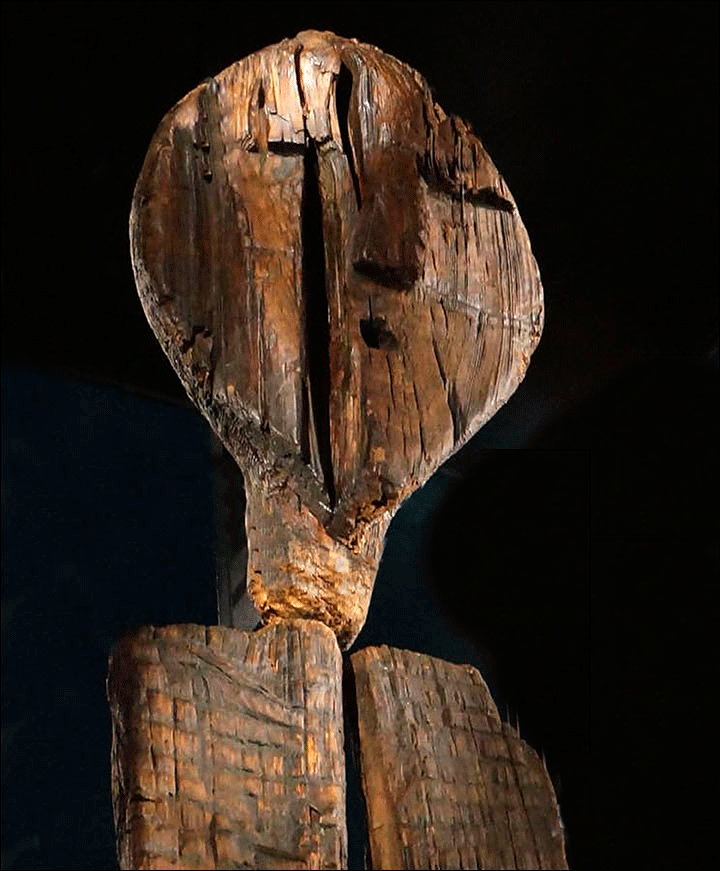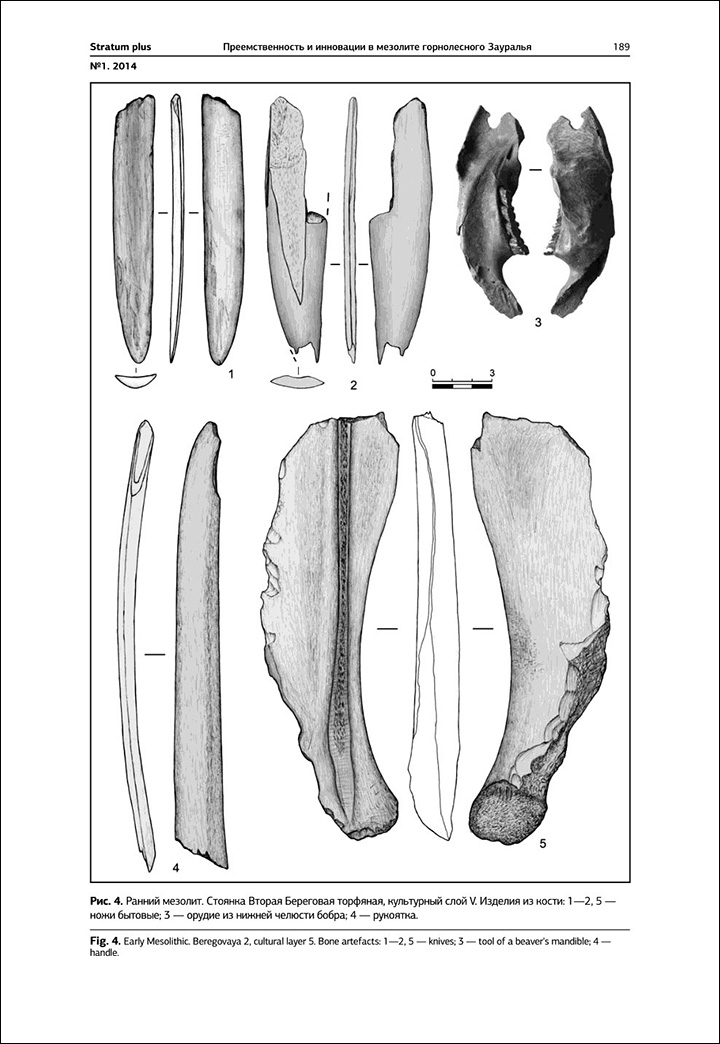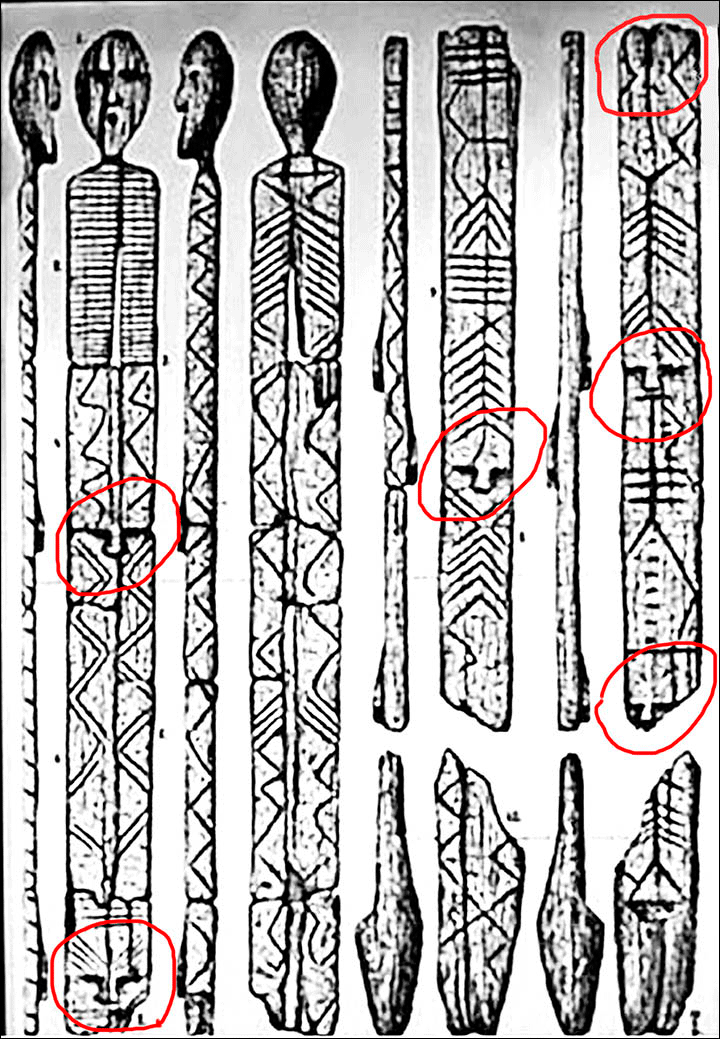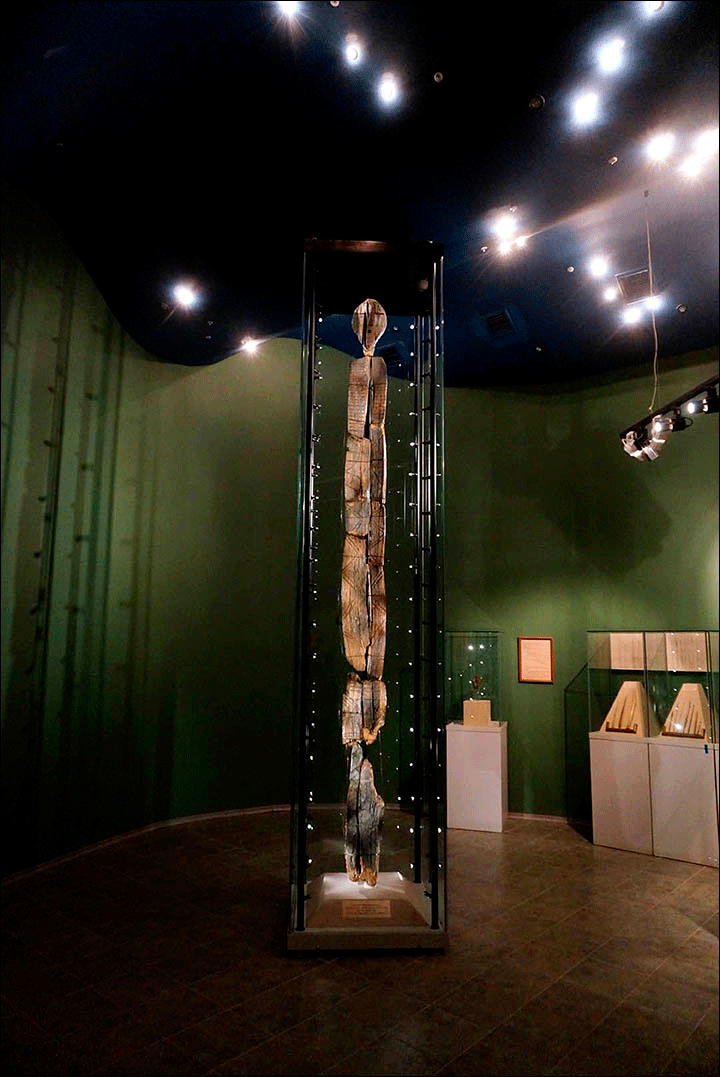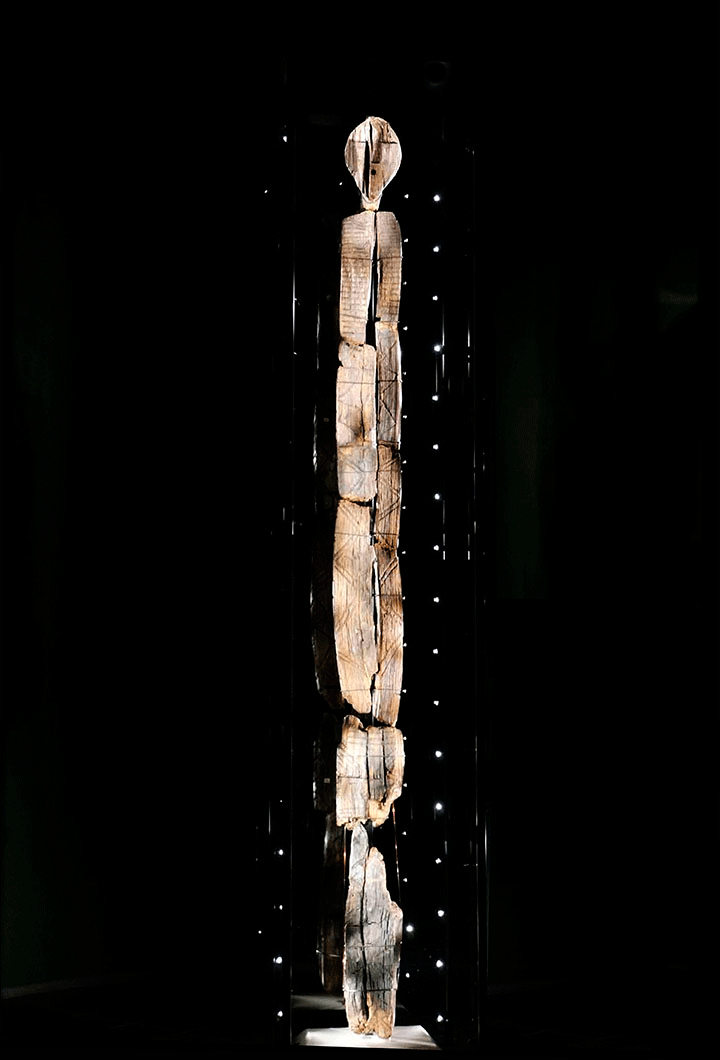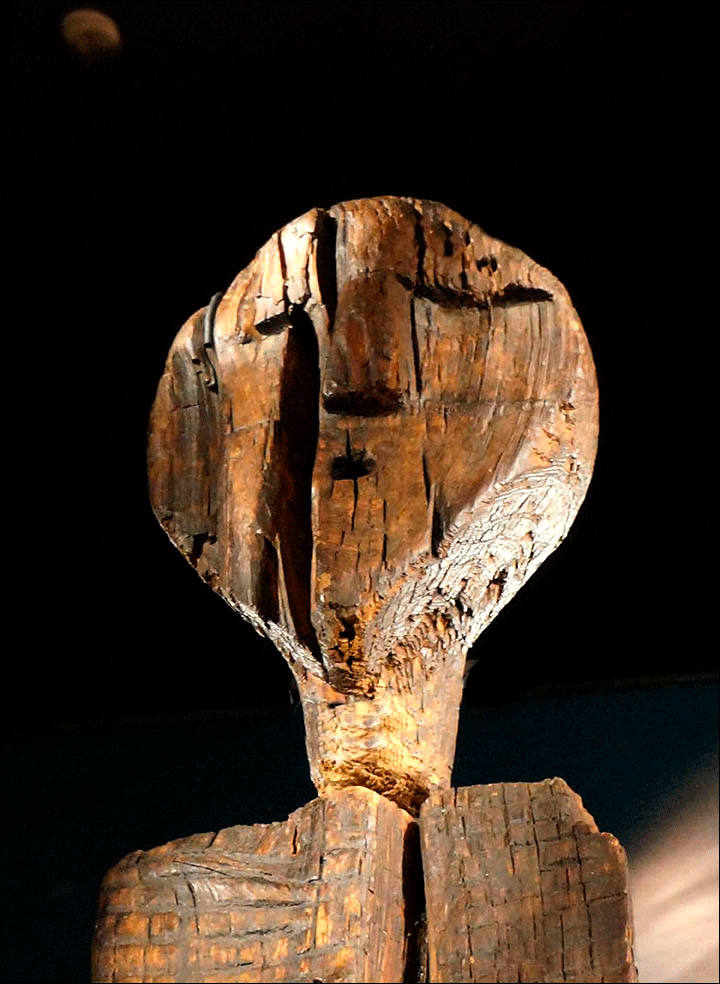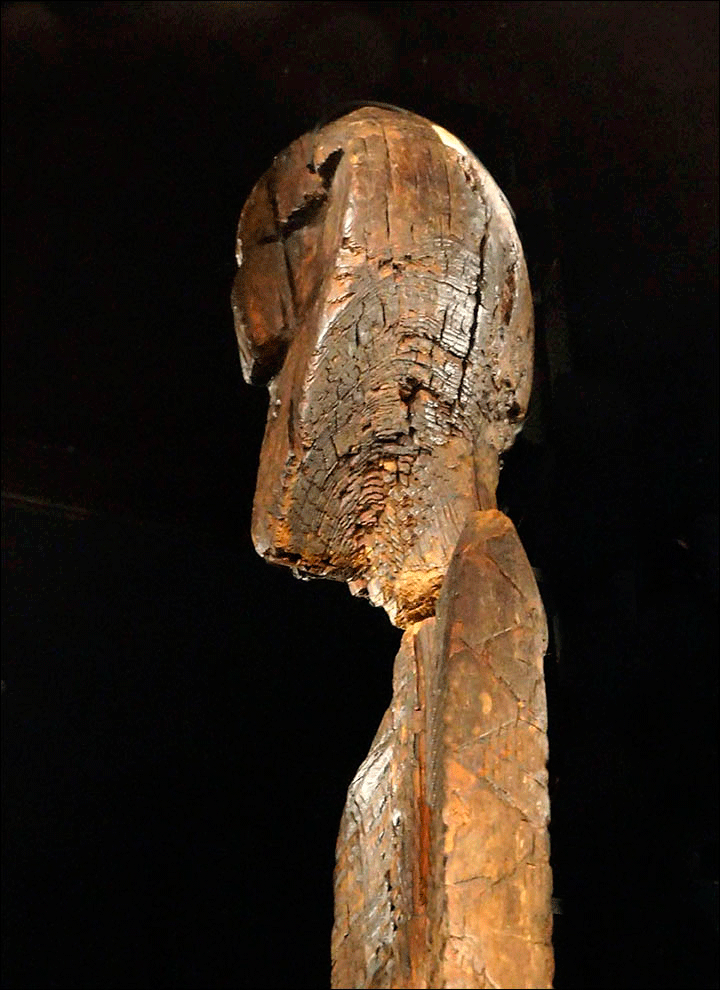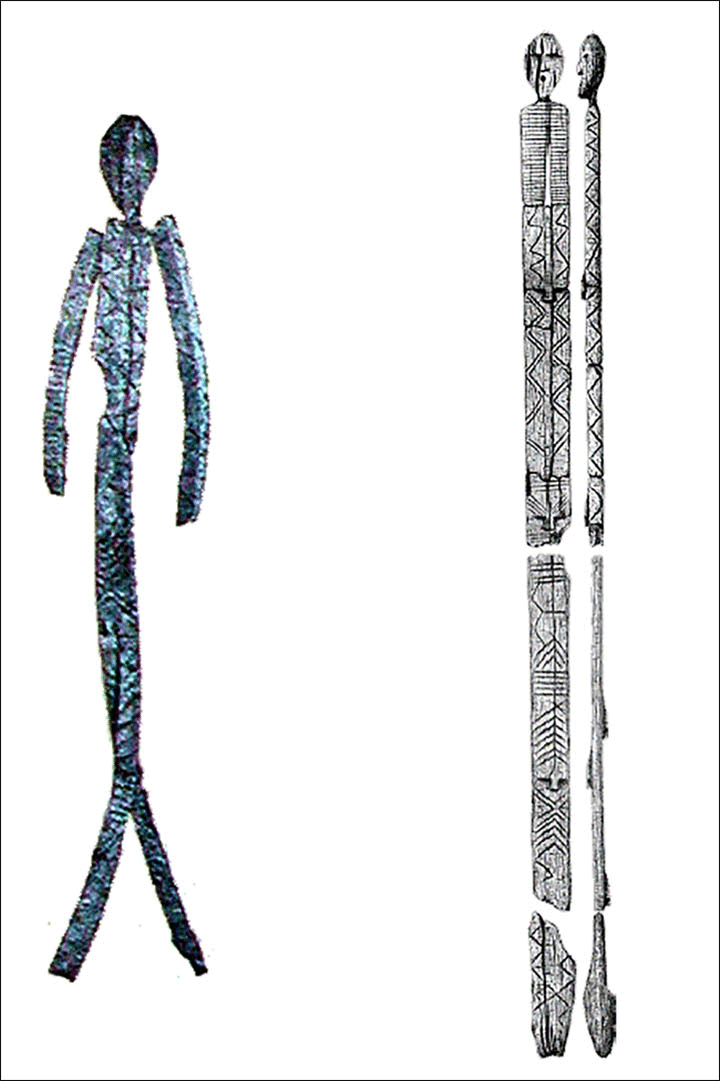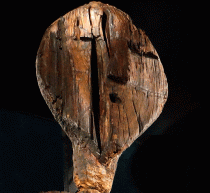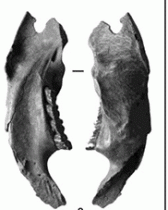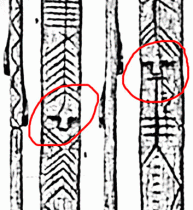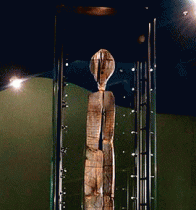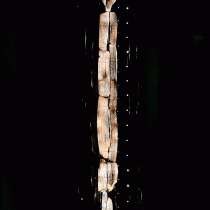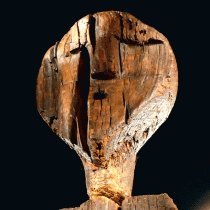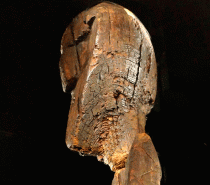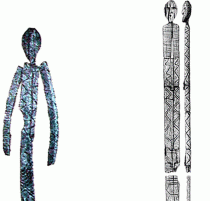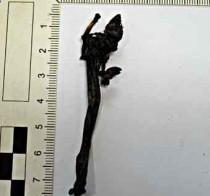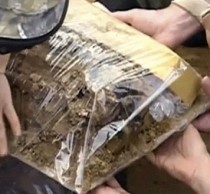New findings indicate that images and hieroglyphics on the Shigir Idol were carved with the jaw of a beaver. The Shigir Idol is a sculpture from the Mesolithic Age, dating 11,000 years back, and was originally unearthed in the Ural Mountains in 1890. It is about 5.3 metres tall and bears seven faces and is on display in a Yekaterinburg museum. The Idol was initially on a stone basement and remained standing for about 50 years. When it collapsed it fell in a pond and was covered in turf which preserved it at an excellent condition.
International experts gathered for a conference in the city this week where professor Mikhail Zhilin, researcher of the Russian Academy of Sciences’ Institute of Archaeology, said the statue was made of larch. Silicon faceted tools were used to carve the basement and head and after the surface was polished with an abrasive it was carved with a chisel. Three different types of chisel were used with different blade widths. The faces were carved at the end of the process with the use of other tools too, made of beaver lower jaws.
Zhilin suspected that this was the case when he found a tool made from beaver jaw at the Beregovaya 2 archaeological site, dating to the same period. After studying the idol he found that the tool is consistent with the carving marks.
After all, beavers use their teeth to carve trees, so sharpening a beaver’s cutter teeth to create a carving tool for concave surfaces makes perfect sense, said Zhilin.
